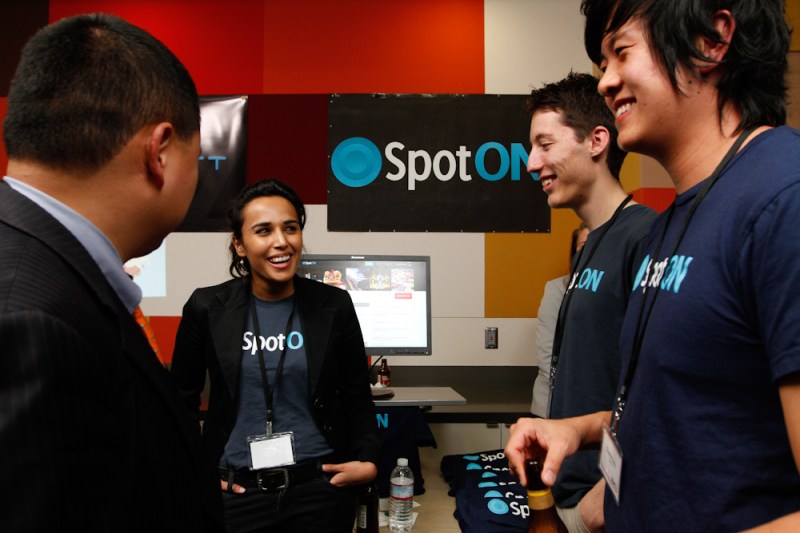When the pandemic hit, Ben Fischer ’23’s first instinct was to find a way to connect Stanford students who were now spread across the globe. Fischer transformed his idea into Lighthouse, an application that allows users to spontaneously connect with friends instead of having to schedule calls.
“I started Lighthouse not even knowing if it was going to be an app or a spreadsheet I sent to my friends,” Fischer said. “I wasn’t even coming from the perspective of a business or startup or a venture. It was really just something that I felt was missing from my life that was frustrating me.”
But after developing the concept for an application, Fischer and his co-founder, Ishan Gandhi ’23, realized several challenges came with creating a startup, including acquiring funds to launch and grow.
Fischer said he believes that Lighthouse’s turn to seeking capital is an inevitable move made by aspiring entrepreneurs. Startup founders have a variety of funding options they can seek out, including crowd-funding, accelerator programs, angel investments and venture capital.
Accelerator programs can serve not just as founding sources but as a mentorship opportunities for preliminary-stage startups, and support founders in their earliest stages, providing mentorship, education and limited financing.
One of Stanford’s most successful accelerators is StartX, a group formerly affiliated with Stanford Student Enterprises (SSE), the financial branch of the Associated Students of Stanford University. The non-profit educational accelerator is run by a number of entrepreneurs, experts and Stanford professors who have experience in funding successful companies like Lime, Branch, Life360, Poynt and Patreon.
Perhaps most familiar to Stanford students is Cardinal Ventures, a zero-equity accelerator program run by students under SSE. According to Michelle Schwartzman ’22, managing director of Cardinal Ventures, the group runs two quarter-long programs in the fall and spring that involve mentorship, networking and strategic advice. Provided with resources and a starter check ranging from $1,000 to $10,000, founders work to get their products and pitches ready for Demo Day, where they present before hundreds of investors. Schwartzman said that Cardinal Ventures has aided companies such as Firefly, Nova Credit and Mammoth Biosciences.
“If you are a student that’s going out and fundraising, that’s remarkable,” Schwartzman said. “I think there’s a lot of buzz about being a student founder, but that shouldn’t undersell how difficult of a journey it can be, and how difficult of a choice, it can be to sometimes drop out of school after taking that check.”
Aside from accelerators, another popular method of funding that entrepreneurs seek out is venture capital. Venture capitalists invest in startups and small businesses using funds pooled together from several investors.
“For a consumer-focused student startup, being able to have the resources at a time when people are embarking on a new, crazy online world meant acting quickly,” Fischer said. Although the app had not yet been developed when he and his partner began to seek funding, he said they “angled the lack of experience” by leveraging their understanding of the target users: college students.
Fischer said that while accelerators and incubators had initially attracted him, some programs were altered as a result of the pandemic and lost their appeal. He then turned to venture capital, and within three weeks, Fischer and Gandhi secured a $325,000 investment from Xfund, a venture capital company.
With the investment, Fischer said that Lighthouse is now looking to hire app developers and other team members, in addition to growing marketing efforts. He also added that Xfund has provided Lighthouse with expanded contact networks, making it easier to promote their app.
Kasha Akrami ’21 leads the scouting program of Draper Associates, a venture capital firm, which searches for aspiring entrepreneurs looking to build their company.
“People who invest in startups know it’s a risky business and are prepared to lose money,” he said. “Scouts look for people who differentiate themselves and have a well-structured idea.”
The scout program is available exclusively to Stanford, Harvard and MIT students, and funding can range from $2,500 to $200,000. According to Akrami, Draper Associates has invested in a number of reputable companies including Twitch, Robinhood, Cruise, Coinbase and Unum, a virtual-identification startup co-founded by Stanford dropout Aidan McCarty and Liam McCarty ’18.
Antonia Hellman ’21 and Ethan Hellman ’24 co-founded Toucan, a startup that aims to provide a virtual platform for social events. According to Antonia, Toucan primarily raised funds from angel investors and is in the process of finalizing a $1 million pre-seed round, or a first round of funding a company receives while it is young and still being established.
“As first-time founders, my brother and co-founder, Ethan, and I had to learn the ropes very quickly,” Antonia Hellman wrote in an email. “We were able to reach several VCs and angels very early on; however those initial pitches were mostly spent learning what not to do.”
“Luckily, the learning curve was steep,” she added. “We may have not secured funding from those VCs, but those experiences certainly taught us a lot.”
Contact Ihita Ghosh at ihita.ghosh29 ‘at’ gmail.com.
